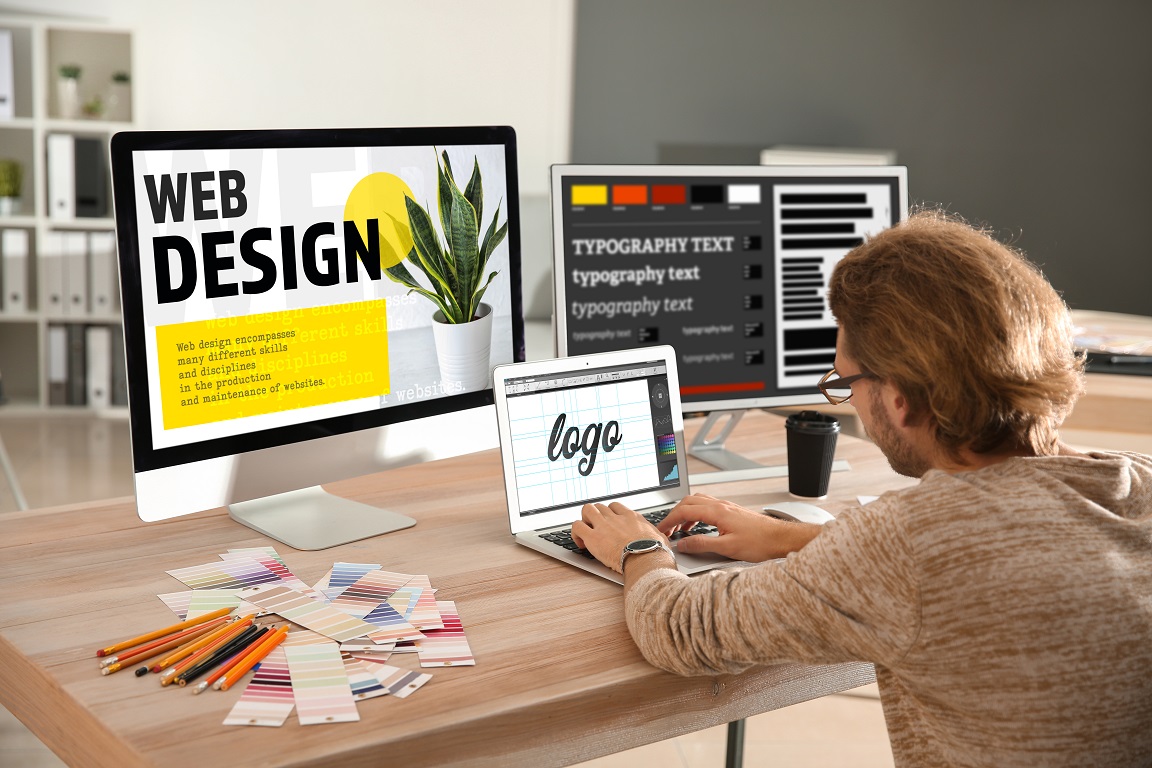Specialist Website Design to Improve User Experience
Specialist Website Design to Improve User Experience
Blog Article
Introducing the Crucial Elements of Efficient Website Design for Transforming Site Visitors Into Customers
In the large landscape of the electronic world, the art of website design stands as a pivotal force in transforming mere visitors into devoted clients. As organizations make every effort to sculpt their unique online presence, it becomes progressively vital to harness the power of reliable internet style aspects. From smooth navigating that guides individuals effortlessly with a site to visually captivating aesthetic appeals that leave an enduring perception, the elements that comprise a successful site are multifaceted. In the middle of this intricacy lies a common string-- a string that when pulled, unravels the keys to transforming casual browsers right into dedicated clientele (website designer).
User-Friendly Navigating
User-Friendly Navigating is an important part of an efficient site layout, guaranteeing smooth user experience and promoting easy accessibility to information. A well-balanced navigating system guides customers through the web site, aiding them find what they are seeking promptly and successfully. User-friendly and clear navigating menus, such as an efficient dropdown food selection or a sticky navigation bar, can substantially boost user fulfillment and engagement.
Users should be able to browse the internet site easily without having to presume where to discover certain info. Integrating breadcrumbs can assist individuals understand their current location within the internet site power structure, making it less complicated for them to backtrack or discover associated pages.
Compelling Visuals
Incorporating captivating images and graphics contributes in boosting the visual appeal and overall customer experience of a web site. Compelling visuals have the power to involve site visitors from the moment they come down on a web page, drawing them in and urging additional exploration. High-quality photos that relate to the content not just make the site aesthetically pleasing however also aid communicate details a lot more effectively. It is necessary to strike an equilibrium between text and visuals to produce a harmonious layout that keeps customers interested and urges them to remain on the website.
Additionally, using videos, infographics, computer animations, and various other interactive aesthetic aspects can additionally enhance the user experience. By incorporating compelling visuals purposefully throughout the internet site, organizations can leave an enduring perception on visitors and increase the likelihood of transforming them right into faithful customers.
Clear Call-to-Actions

The phrasing of a CTA must be concise and persuasive, plainly stating the benefit or worth recommendation for the individual. For example, rather than a common "Learn Even more" switch, a much more engaging CTA might be "Discover Exclusive Offers." Furthermore, using contrasting shades, whitespace, or directional hints can help attract interest to the CTA. A/B screening different variations of CTAs can additionally offer valuable understandings into which ones reverberate best with your target market. By optimizing your CTAs for quality and effect, you can increase the probability of converting site visitors into devoted customers.

Mobile Responsiveness
Optimizing a website for mobile responsiveness is crucial in today's electronic landscape to make certain smooth individual experience across various tools (website designer). With the increasing usage of smart devices and tablets, a web site that is not mobile-responsive can cause aggravating user experiences, high bounce prices, and eventually, loss of potential consumers
Mobile responsiveness involves making a web site in such a my blog way that it automatically changes its layout, web content, and features to match the screen dimension and abilities of the device being utilized. This guarantees that customers have a constant and maximized experience whether they access the site on a computer, a mobile phone, or a tablet computer.
Trust-Building Aspects
Carrying out trust-building elements on a site is essential to establish trustworthiness and foster confidence among site visitors, ultimately enhancing the likelihood look here of converting them into dedicated customers. Additionally, showcasing trust fund badges from credible safety and security providers, such as SSL certificates or payment entrance logos, can aid infuse confidence in the web site's security measures, guaranteeing site visitors that their individual details is safe.
Another effective trust-building method is supplying clear and clear details about the firm, consisting of contact information, physical address, and a compelling 'About United States' page. This transparency demonstrates accountability and credibility, making site visitors a lot more comfortable with engaging and making purchases on the web site. In addition, incorporating count on signals like market certifications, honors, or affiliations can better improve the site's reliability and distinguish it from rivals. By incorporating these trust-building elements, websites can create a trustworthy environment that encourages site visitors to come to be devoted customers.
Conclusion
To conclude, reliable internet layout plays a critical function in transforming visitors right into consumers. Straightforward navigating, compelling visuals, clear call-to-actions, mobile responsiveness, and trust-building elements are necessary elements for a successful site. By integrating these graphic design web aspects, organizations can create a smooth and appealing on the internet experience for their visitors, inevitably resulting in boosted conversions and consumer commitment.

Including captivating images and graphics is instrumental in improving the visual allure and overall customer experience of a web site.
Report this page